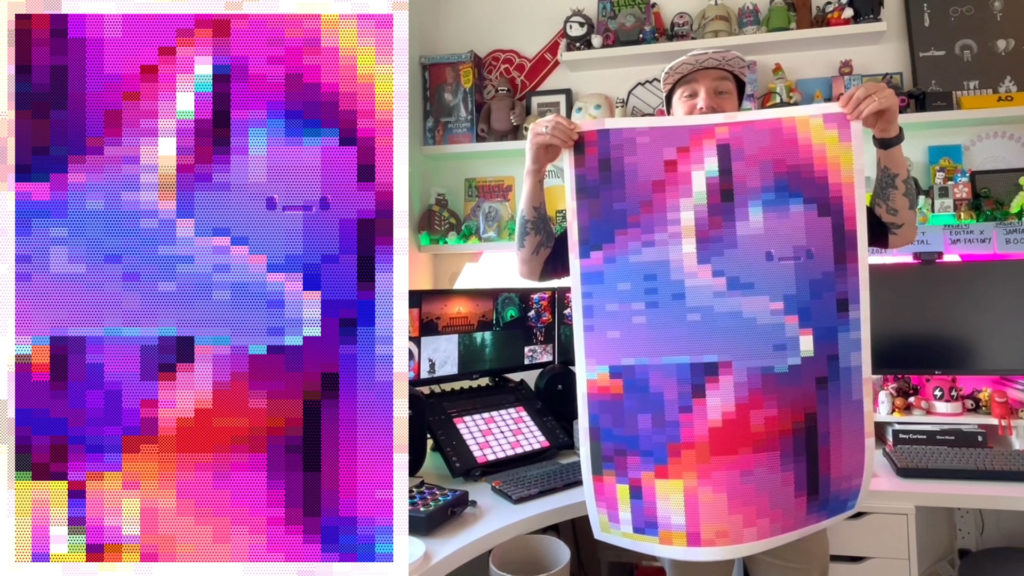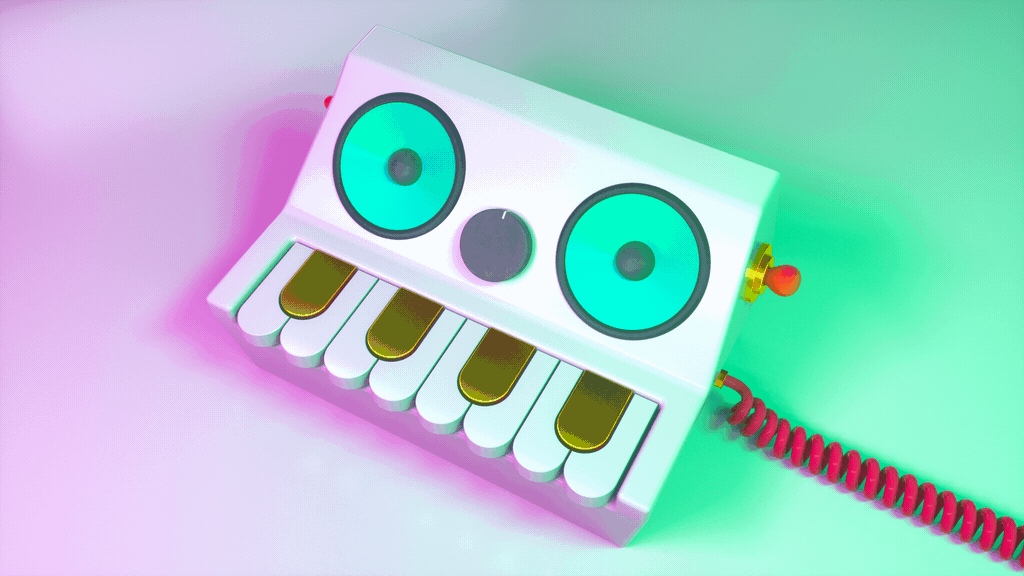We recently connected for an interview with JamFactory, the creative-alter-ego alias of the crypto artist Gavin Strange, which just marked its twentieth anniversary. Aesthetically striking as a digital neo-pop resurgence, JamFactory’s work is notably recognized by its pastel fifty shades of pink colour scheme and fantasy-like technology ensembles.
By day Gavin is a director and designer at the creative studio Aardman, known for its widely acclaimed stop-motion films such as Chicken Run and Shaun the Sheep. By night, JamFactory is an explorer, like many others, of the possibilities NFTs offer to digital creators like himself.

“My artistic persona came about when I registered the JamFactory website – a space to make the things that no-one would ask me to do”, JamFactory explains. Being a junior graphic designer and then a web designer gave him little room to experiment with new ideas. “When you’re seventeen, your job title doesn’t exactly communicate the breadth of your interests. Jam Factory became a creative outlet that allowed me to do anything and everything,” he adds.
JamFactory learned of blockchain very early on compared to many other artists in the space, but it was not until 2020 that he started minting his first works. “In 2013, I was offered to be paid in bitcoin for my documentary art book. I was always interested in new technology and agreed! The buyer helped me set up a digital wallet and paid me 25£ worth of bitcoin”, JamFactory says. It wasn’t until five years later, the 2018 bull run, that interest truly sparked – his 25£ also turned into 1250£.
“Luckily, we were able to connect with David Moore of KnownOrigin to explain NFTs to us. He had been trying to educate us for a long time and thankfully had the patience to be a kind and gracious mentor once we were ready years later”, JamFactory says.

In the last eight months since JamFactory started tokenizing his work, the scene exploded massively, but some challenges remain. The new playing field operates by a different set of rules, inviting its participants to experience a paradigm shift. For JamFactory this shift was apparent in the notion of the monetary value; “Art and money always went together, but never that close. We were thinking about money and the art model the wrong way, about how the art model operates, and the financial model works. But this means that you are applying old rules to the new system, and those that think this way will not understand the new reality blockchain opens,” explains JamFactory, “As soon as you stop thinking about that, it frees you up – you can carve out whatever you want to carve”.
With that open mindset, JamFactory uses Twitter to connect with the NFT community and onboard more platforms to sell art. “Crypto Twitter – It’s fun, wild and different. All the other platforms are really dead; just look at how Facebook is killing Instagram – you get no reach,” he says. Channels like Instagram allowed users to project a version of their alter-ego, creating visions of self that not necessarily correspond to reality. NFTs, on the other hand, are now empowering artists to have alter-lives, making money by creating and selling art without even having to disclose their true identity.

JamFactory makes it clear that not everyone can or has to be like Beeple. “It’s a game that you have to play,” he says. Indeed, they should not – each artist has a unique story to tell, a set of experiences and knowledge that make them stand out. Instead of copying a trending aesthetic, perhaps it’s worth perfecting the vision shadowed by doubt. JamFactory spends his time experimenting with different mediums and recently released an entirely new body of work building upon his photography with a Leica M6 35mm camera.
The headlines may message that certain artists reached success overnight – the truth is far from it. JamFactory has dedicated the past twenty years to become a professional artist and, like countless other creators – many more to come!



